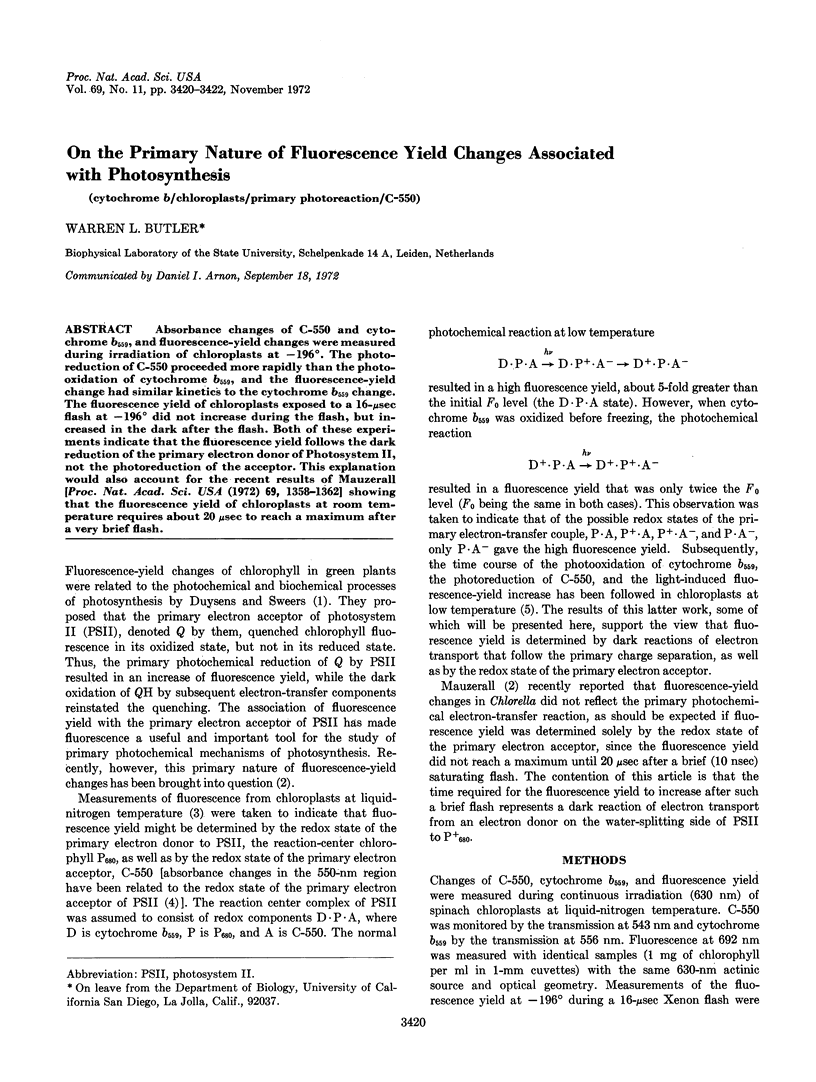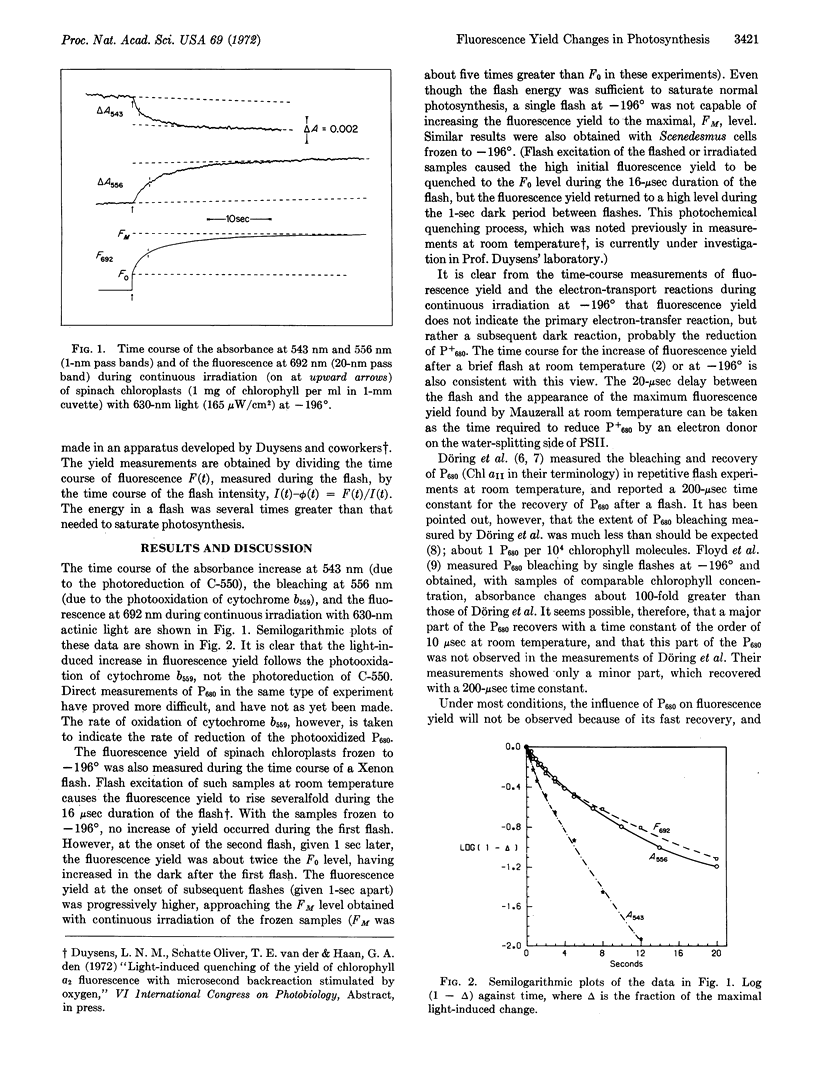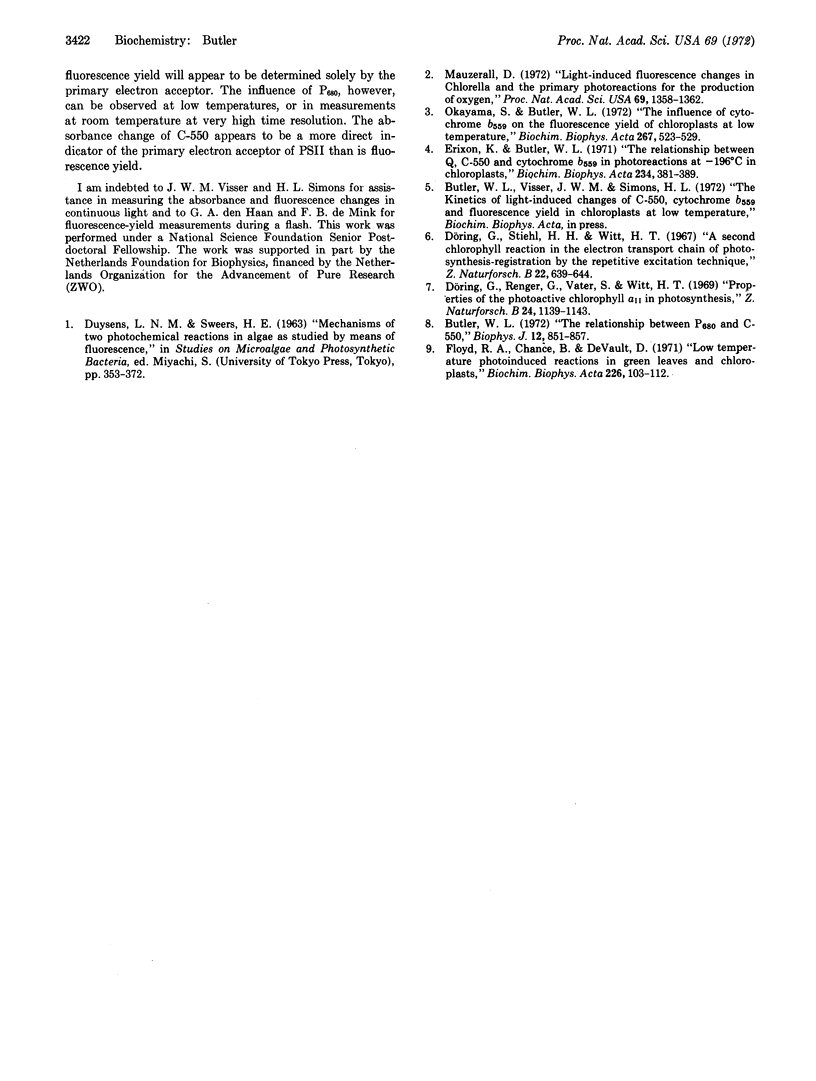Abstract
Absorbance changes of C-550 and cytochrome b559, and fluorescence-yield changes were measured during irradiation of chloroplasts at -196°. The photo-reduction of C-550 proceeded more rapidly than the photo-oxidation of cytochrome b559, and the fluorescence-yield change had similar kinetics to the cytochrome b559 change. The fluorescence yield of chloroplasts exposed to a 16-μsec flash at -196° did not increase during the flash, but increased in the dark after the flash. Both of these experiments indicate that the fluorescence yield follows the dark reduction of the primary electron donor of Photosystem II, not the photoreduction of the acceptor. This explanation would also account for the recent results of Mauzerall [Proc. Nat. Acad. Sci. USA (1972) 69, 1358-1362] showing that the fluorescence yield of chloroplasts at room temperature requires about 20 μsec to reach a maximum after a very brief flash.
Keywords: cytochrome b, chloroplasts, primary photoreaction, C-550
Full text
PDF


Selected References
These references are in PubMed. This may not be the complete list of references from this article.
- Butler W. L. The relationship between P-680 and C-550. Biophys J. 1972 Jul;12(7):851–857. doi: 10.1016/S0006-3495(72)86128-9. [DOI] [PMC free article] [PubMed] [Google Scholar]
- Döring G., Renger G., Vater J., Witt H. T. Properties of the photoactive chlorophyll-aII in photosynthesis. Z Naturforsch B. 1969 Sep;24(9):1139–1143. doi: 10.1515/znb-1969-0911. [DOI] [PubMed] [Google Scholar]
- Döring G., Stiehl H. H., Witt H. T. A second chlorophyll reaction in the electron chain of photosynthesis--registration by the repetitive excitation technique. Z Naturforsch B. 1967 Jun;22(6):639–644. doi: 10.1515/znb-1967-0614. [DOI] [PubMed] [Google Scholar]
- Erixon K., Butler W. L. The relationship between Q, C- 550 and cytochrome b 559 in photoreactions at -196 degrees in chloroplasts. Biochim Biophys Acta. 1971 Jun 15;234(3):381–389. doi: 10.1016/0005-2728(71)90205-2. [DOI] [PubMed] [Google Scholar]
- Floyd R. A., Chance B., Devault D. Low temperature photo-induced reactions in green leaves and chloroplasts. Biochim Biophys Acta. 1971 Jan 12;226(1):103–112. doi: 10.1016/0005-2728(71)90182-4. [DOI] [PubMed] [Google Scholar]
- Mauzerall D. Light-induced fluorescence changes in Chlorella, and the primary photoreactions for the production of oxygen. Proc Natl Acad Sci U S A. 1972 Jun;69(6):1358–1362. doi: 10.1073/pnas.69.6.1358. [DOI] [PMC free article] [PubMed] [Google Scholar]
- Okayama S., Butler W. L. The influence of cytochrome b 559 on the fluorescence yield of chloroplasts at low temperature. Biochim Biophys Acta. 1972 Jun 23;267(3):523–529. doi: 10.1016/0005-2728(72)90180-6. [DOI] [PubMed] [Google Scholar]


